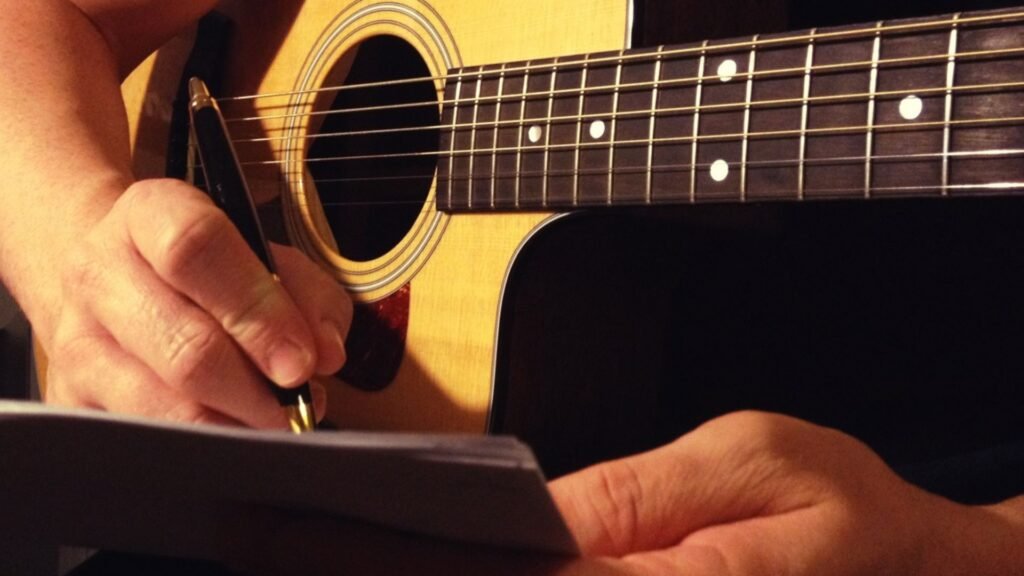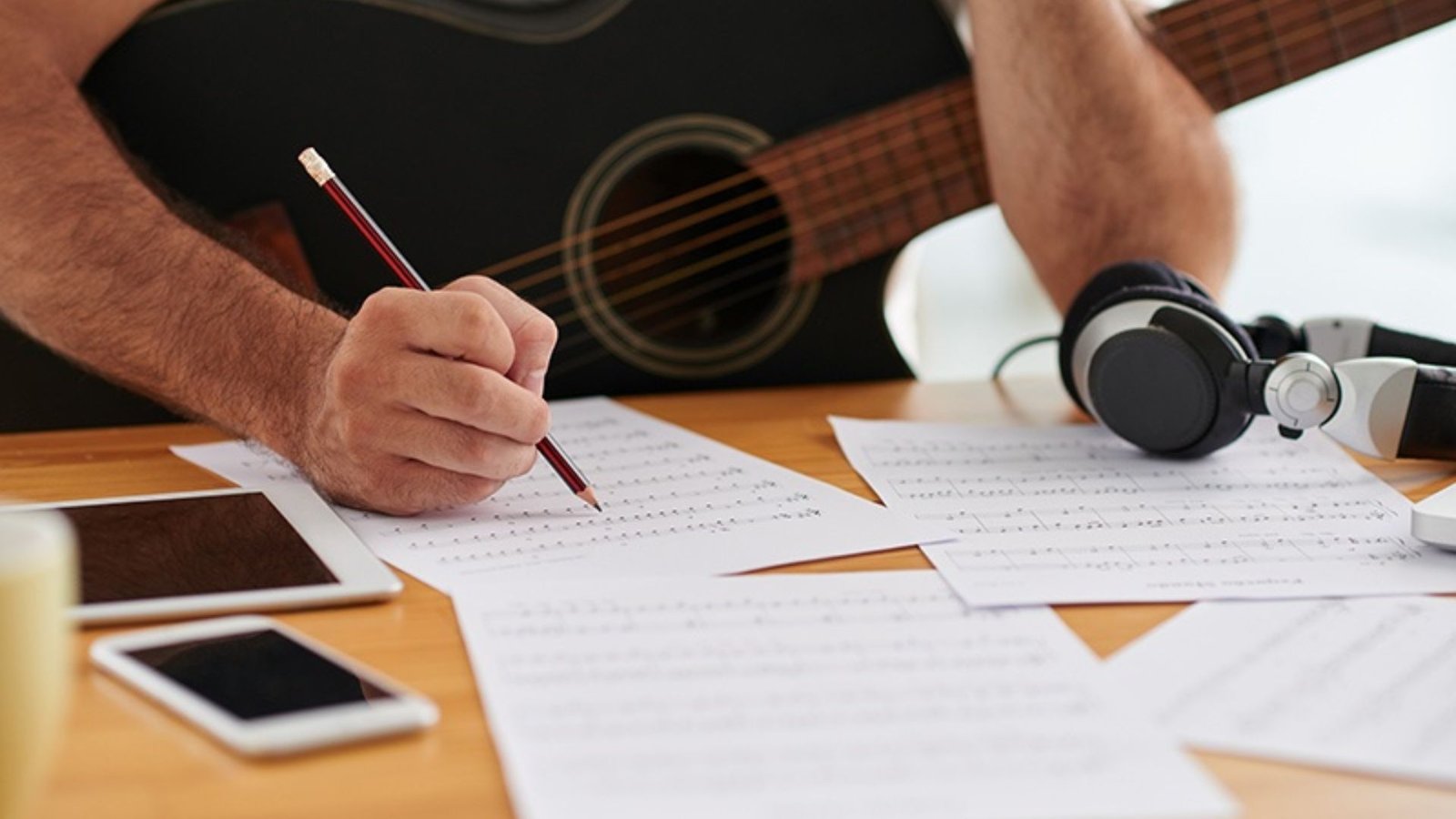The Role of Rhyme and Rhythm in Songwriting
In songwriting, rhyme and rhythm are not just technical elements; they are the backbone of a song’s structure. Together, they influence how lyrics feel, how easily they’re remembered, and how they resonate with listeners. Whether you’re crafting a catchy pop hook, a soulful ballad, or a rap verse, understanding how rhyme and rhythm work together can elevate your songwriting to the next level.
Let’s break down how these two elements work, why they’re important, and how you can use them to create songs that stick with your audience.

Rhyme: Making Lyrics Memorable
Rhyme is one of the most noticeable features of lyrics. It’s often what makes a song catchy and easy to remember. Rhymes help give structure to the lyrics, and their repetition creates a sense of cohesion that enhances the listener’s experience.
- Catchy and Easy to Remember
Rhyming words naturally create patterns in the listener’s mind. Think about some of the most memorable song lyrics of all time—chances are, many of them rhyme. Phrases like “I will always love you” or “Don’t stop believin’” are not just catchy because of the melody, but also because of the rhyme scheme that makes them easier to remember. - Rhythm and Flow Through Rhyme
The choice of words that rhyme can set the pace of a song. Rhyming words typically occur at the end of lines, and how you arrange those lines affects how smoothly the song flows. For example, a simple rhyme scheme like AABB (where the first two lines rhyme with each other and the next two lines rhyme with each other) is commonly used in pop music because it feels familiar and comfortable to listeners. - Creating Emotional Impact
A well-placed rhyme can also help emphasize the emotion of a song. For instance, in “Lose Yourself” by Eminem, the rhymes are quick and sharp, which matches the urgency and intensity of the song. In contrast, slower ballads may use more open or internal rhymes to give a more reflective or emotional tone, as seen in “Someone Like You” by Adele.
Rhythm: The Heartbeat of a Song
While rhyme creates structure and helps make lyrics memorable, rhythm dictates how the song feels. It controls the pace, energy, and emotion conveyed in the lyrics. Rhythm is the pattern of beats and accents that give a song its pulse and movement.
- Setting the Mood and Energy
The rhythm you choose can make a huge difference in how a song is perceived. Fast tempos and syncopated rhythms generate excitement, while slower tempos with a steady beat may create a sense of calm or introspection. For example, the rhythmic pulse in “Uptown Funk” by Mark Ronson and Bruno Mars drives the energy of the entire song, making it feel upbeat and fun. - How Words and Music Interact
The rhythm of a song is closely tied to how words are placed within the music. A strong rhythmic foundation gives the lyrics a place to “sit,” and it affects how syllables fall on beats. In hip-hop, for instance, rhythm is essential to the flow of the rap verses. Rhythmic patterns in rap verses, like those used by artists like Kendrick Lamar or Nas, help to create intricate, complex wordplay that aligns perfectly with the beat. - Pacing and Timing
The rhythm also determines the pacing of the song. The way you time your lyrics—whether you stretch them out over a long note or hit them quickly in short bursts—adds variety and keeps the song engaging. A well-timed pause can build anticipation, while a syncopated rhythm can make the song feel more dynamic and unpredictable.
Types of Rhymes to Use
There are many ways to approach rhyming in songwriting, depending on the tone, style, and complexity you want. Here are some common types of rhymes:
- End Rhymes
This is the most common type of rhyme in songwriting, where the last word in each line rhymes with another. For example: “I see the stars up in the sky,
And in the night, I start to cry.”
End rhymes create a strong sense of closure and can add a sense of predictability, which can be comforting or satisfying to the listener. - Internal Rhymes
Internal rhymes occur within a single line, adding extra rhythm and flair. For example: “I’m living in a rhythm, I’m in a prism of time.”
Internal rhymes are often used in more complex or fast-paced songs, such as in rap or spoken word. - Slant Rhymes (Near Rhymes)
Slant rhymes don’t rhyme exactly but have a similar sound. For example, “love” and “move.” These can make the song feel less predictable and more natural, while still maintaining the connection between words. - Assonance and Consonance
These are types of rhymes that focus on vowel or consonant sounds rather than the exact ending syllables. For example, assonance might occur with words like “feel” and “real,” while consonance could connect “crash” and “cash.” These subtler forms of rhyme can add depth to the lyrics without being too obvious.
Conclusion
Rhyme and rhythm are fundamental to songwriting. They help structure your lyrics, influence the feel of the song, and make your words more memorable. By understanding how rhyme creates a sense of cohesion and how rhythm sets the tone, you can write songs that resonate with listeners both emotionally and sonically. Whether you’re aiming for simplicity or complexity, always remember that rhyme and rhythm work hand in hand to give your music its unique flow and energy.



